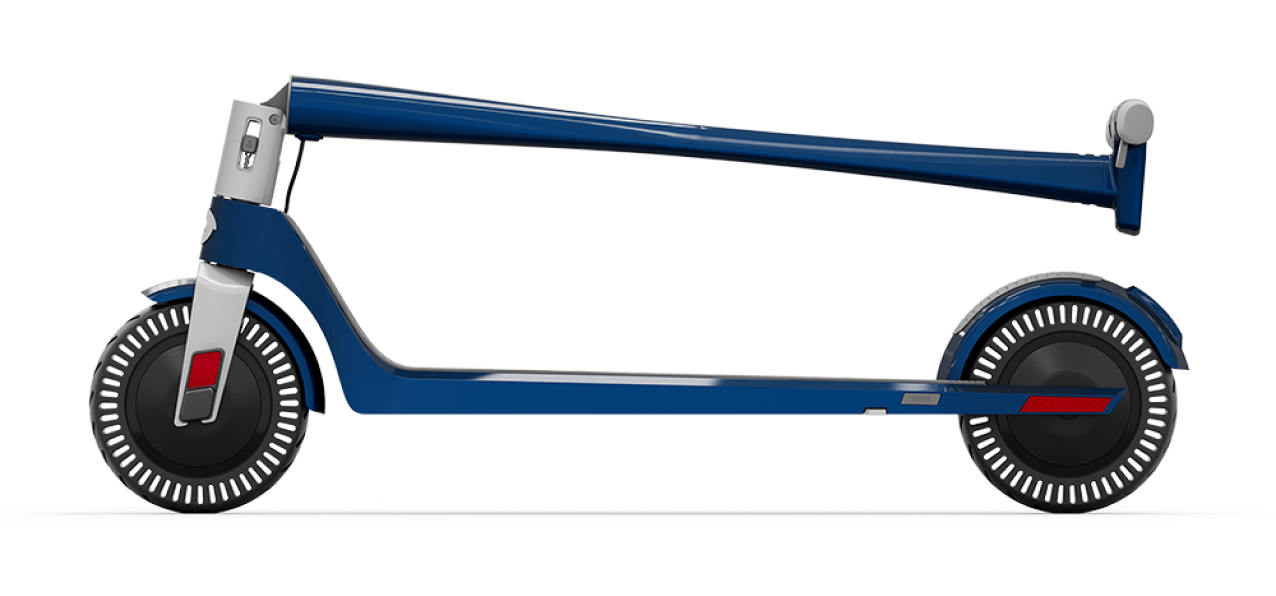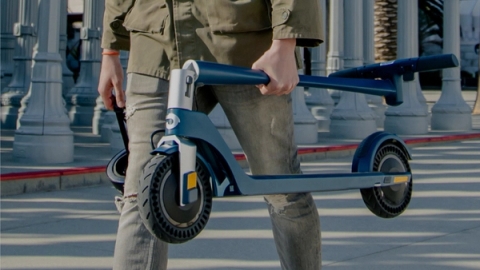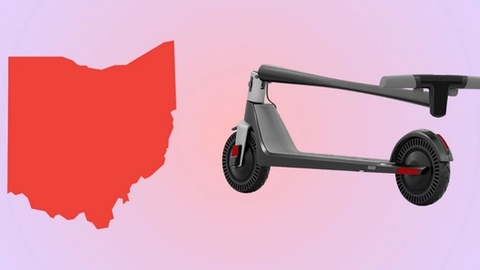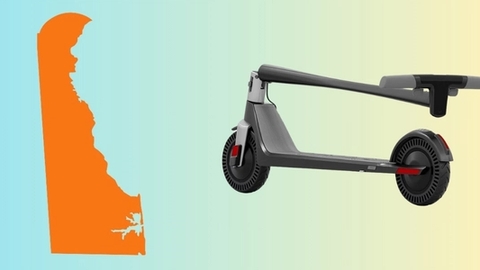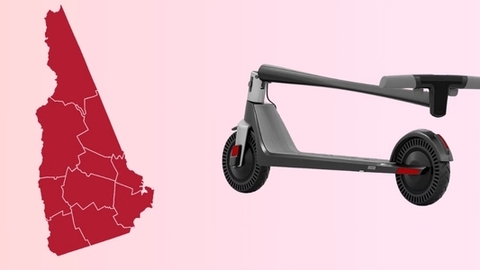Micromobility is here to stay, and it’s changing how we experience urban life for the better. With Unagi’s membership program, you can enjoy all the benefits of a top-tier electric scooter without the sky-high price of ownership or the inconvenience of ride-sharing.
Now, we all know our planet's thermostat is going haywire. Since 2019, extreme weather has become the norm, not the exception, signaling a climate system that's increasingly out of balance. And then comes this bombshell, the AR6 Synthesis Report from the UN Intergovernmental Panel on Climate Change, and it's a doozy. The report lays it out thick and clear: we're on a fast track to some serious climate change. If we don't pump the brakes on emissions, that net-zero emissions target for 2050 will slip right through our fingers.

IEA, Global CO2 emissions by sector, 2019-2022, IEA, Paris https://www.iea.org/data-and-statistics/charts/global-co2-emissions-by-sector-2019-2022, IEA. Licence: CC BY 4.0
The numbers don't lie—we hit a global monthly average CO2 concentration of 419.31 ppm in 2023. That's up from the year before (7.98 Gt for the year), and it's a big red flag that we need to cut down on greenhouse gas emissions, like yesterday. And where's this sooty cloud coming from? You betcha, it's our daily commute. Cars, trucks, buses—you name it, they're coughing up a storm, chalking up to a hefty 21.7% of the global energy-related CO2 emissions. That's no small chunk of the carbon footprint, thrusting transportation into the limelight when it comes to cutting down on carbon and steering towards decarbonisation.

IEA, Global energy-related CO2 emissions by sector, IEA, Paris https://www.iea.org/data-and-statistics/charts/global-energy-related-co2-emissions-by-sector, IEA. Licence: CC BY 4.0
Urban transport decarbonisation, a critical component of the climate crisis response, has sparked a revolution in electric vehicles. And it's not just those high-flying electric cars; we're diving into the world of Personal Electric Vehicles (PEVs)—yes, electric scooters are stealing the spotlight. They are increasingly favored for their potential to yield cleaner air, reduce traffic congestion, reduce oil dependency, accessibility, and the fact that they can slice through traffic like a hot knife through butter, making the daily commute less of a drag and more of a glide. The massive adoption of electric scooters in the world's largest cities is a testament to their perceived benefits.
From a scientific standpoint, the environmental superiority of electric scooters over cars is apparent. It's electric (duh), which means it's usually less polluting than gas-guzzling cars. Let's break it down: an e-scooter zipping a 100-kilogram person around will be way more efficient than a car with a 30% efficient internal combustion engine doing the same job. Why? Because physics says so. Less mass to move equals less energy to burn.
But hold up—before we start throwing high-fives and declaring electric scooters the ultimate eco-champions, we've got to dig a little deeper. Sure, they look great on paper, but what about the not-so-obvious stuff? Like, what's the deal with the pollution they might be hiding? How long before these scooters hit the junk pile and can we recycle them without turning Mother Nature into a landfill? And how does their overall ecological impact truly measure up when compared to traditional means of transport?
In this article, we're going to dive into all that. We'll sift through the stats, ask the tough questions, and figure out if these scooters are really the green dream or just another shade of grey. Are they the answer to our urban transport prayers, or is there more to the story? Join us as we explore the nuances of electric scooter emissions versus car emissions and what that means for our planet's future.
Understanding Carbon Footprints

What is a Carbon Footprint?
A carbon footprint is a tally of all the greenhouse gases emitted into the atmosphere as a result of our actions, whether we're individuals, businesses, events, or products. These greenhouse gas emissions, which include carbon dioxide, methane, nitrous oxide, and fluorinated gases, can come from various sources, such as burning fossil fuels for electricity and transportation, manufacturing processes, and agricultural activities.
The carbon footprint is expressed as a weight of CO2 equivalents, which allows for the comparison of emissions from different greenhouse gases based on their global warming potential.
Beyond the Tailpipe: Measuring Lifecycle Emissions of Scooters vs. Cars

Most people might be surprised to find electric scooters included in discussions about carbon emissions because, after all, they don't produce much during their operation. However, the true environmental impact of any transportation method, including scooters, extends far beyond what happens during use. Measuring the carbon footprint of a product involves a comprehensive evaluation of its entire lifecycle, from cradle to grave. This includes:
- Manufacturing Phase: The production of any vehicle encompasses the extraction and processing of raw materials, the actual assembly, and the manufacturing of key components. For example, the production of a car involves significant emissions from steel manufacturing and assembly, while for electric scooters, battery production is notably impactful due to the mining and processing of lithium and other metals.
- Energy Production Phase: The environmental impact during this phase is tied to the energy source that powers the vehicle. A car running on gasoline has a different footprint than one using biofuels, just as an electric scooter charged with coal-based electricity differs from one charged with solar power or other renewable energy sources.
- Use Phase: This phase considers the emissions produced while the vehicle is in operation. Traditional cars emit exhaust gases throughout their use, contributing significantly to their carbon footprint. Electric scooters, on the other hand, excel in the usage phase as they do not emit CO2 or other pollutants during operation, except for particulate matter from braking.
- Recycling Phase: This stage deals with decommissioning the vehicle and recycling its parts. The process includes breaking down the vehicle, salvaging reusable components, and safely managing waste. The impact depends on the recyclability of materials, the recycling process itself, and the presence of recycling infrastructure. Cars may have a more established recycling system, reducing their end-of-life impact, whereas the recycling process for electric scooters, especially their batteries, can be less straightforward and more environmentally taxing.
By looking at these phases, we can begin to understand the full carbon footprint of both electric scooters and cars, revealing that the absence of tailpipe emissions doesn't necessarily equate to a smaller environmental impact.
A zero-emission solution? The carbon footprint and environmental impact of electric scooters

Discrepancies in carbon footprint data
The carbon footprint of electric scooters is reported inconsistently across various studies, leading to a wide range of emissions values. For example, Cenex reports that electric scooters emit between 35 and 67 grams of CO2 per kilometer. On the other hand, a study from North Carolina State University (NCSU) paints a less eco-friendly picture, indicating a much higher carbon footprint of approximately 202 grams of CO2 per kilometer per passenger. This figure is roughly that of a conventional car and substantially higher than that of an electric car, and it also surpasses the carbon footprint of buses at full capacity, as well as biking and walking.

From the ITF Report 2021
The International Transport Forum (ITF) report offers a more moderate perspective, estimating that new-generation shared e-scooters contribute about 105 grams of CO2 per kilometer, with first-generation e-scooters at 120 grams and personal scooters at a lower 40 grams. According to the ITF, these emissions are more favorable when compared to personal vehicles and are comparable to high-occupancy public transit.
Regarding emissions across different stages for shared electric scooters, the manufacturing phase, especially the production of lithium-ion batteries, is responsible for roughly 50% of an e-scooter's carbon footprint. The relatively short assumed lifespan of electric scooters, typically about one year, amplifies their ecological impact. Given their limited use—often just a few hundred kilometers—the environmental toll of their batteries is not sufficiently offset. Logistics, which include collecting and charging scooters, account for another 43% of the carbon footprint. This significant percentage is mainly due to the use of CO2-emitting petrol- or diesel-powered vans to transport the electric scooters to the charging station (particularly relevant for shared scooters). The energy production for charging and usage constitutes the remainder of the emissions. For individually owned scooters, the manufacturing and energy phases are the most significant contributors to their carbon footprint.
Reasons for discrepancies
The discrepancies in the carbon footprint data of electric scooters stem from a variety of factors:
- Lack of Comprehensive Data: Scientific studies on the actual use and impact of e-scooters are still in their infancy. The data that does exist is often limited to inner-city areas where e-scooters are most prevalent, and booking data used for analysis may not provide a full picture of their impact, including information on substituted modes of transport and trip purposes.
- Methodological Approaches: The absence of standardized data in Life Cycle Assessment (LCA) databases often necessitates reliance on assumptions and extrapolations, leading to significant discrepancies. These assessments are also conducted in different cities and on scooters with varying uses (shared vs. owned), contributing to the variance in data. Most studies employ an attributional life cycle assessment, which assigns average emission values to the life cycle of an e-scooter. This method may not fully capture the complexities of real-world usage and the evolving nature of technology. In contrast, a consequential life cycle analysis, though less common, considers the broader effects of e-scooter production and the resulting demand, potentially providing a more comprehensive perspective on environmental impact. The diverse usage patterns, specific transportation ecosystems of cities, and the different energy sources for charging scooters are all influential factors in emission calculations
- Usage Conditions: The specific conditions under which electric scooters are used also contribute to the discrepancies. The carbon footprint can be significantly affected by various factors, including the electricity source for charging, the efficiency of the operational model (which encompasses collection and redistribution logistics), and maintenance practices. These factors can differ markedly from one city to another and between studies. For instance, a scooter charged using renewable energy in a city with efficient operational logistics will inherently have a lower carbon footprint than one charged using fossil fuels in a city with less efficient management practices.
Critique of study assumptions
The assumptions underlying various studies on the environmental impact of electric scooters have opened up a margin for error and debate. Notably, the North Carolina State University (NCSU) study has attracted significant scrutiny and media attention for its seemingly high emission projections for electric scooters.
Key critiques of the NCSU study include:
- Comparison with Full-Capacity Buses: The NCSU study has been critiqued for comparing e-scooter emissions to buses operating at full capacity (which can carry up to 60 people), which is considered an unrealistic representation of typical usage patterns. This assumption can unfavorably skew the results against electric scooters by not accurately reflecting their actual environmental impact in everyday scenarios.
- Focus on Shared E-Scooters: The study's emphasis on shared e-scooters, as opposed to personally owned scooters, has also been a point of contention. Shared electric scooters often have different usage patterns and operational logistics, which can lead to higher carbon emissions per kilometer when compared to personal scooters that are not subject to the same frequency of collection and redistribution.
- Selective Reporting: Most publications selectively report the study's findings, highlighting the negative aspects and comparisons with full-capacity buses while neglecting the broader environmental benefits of e-scooters, particularly when juxtaposed with fossil fuel car emissions.
- Industry Evolution: The e-scooter industry has made significant strides in addressing the primary sources of emissions identified in the study, such as the short lifespan of scooters and inefficient charging practices. Innovations, like improved hardware durability and removable batteries, are anticipated to reduce the carbon footprint of e-scooters further. This evolution mirrors the early development of cars, which were initially unreliable but improved over time. The argument posits that e-scooters, much like cars, should be allowed time to mature and achieve their full potential for emission reduction.
- City-Specific Impacts: The environmental impact of e-scooters is not uniform across all geographies; it varies significantly by city, influenced by factors such as the carbon intensity of public transport and local mobility patterns. This context-specific nature of e-scooter emissions suggests that a one-size-fits-all approach to their environmental assessment may not be appropriate.
- Public Perception: The findings surrounding the NCSU study have potentially led to an unfair influence on public and governmental perception of e-scooters. Despite the study's findings, electric scooters are still considered a quick and cost-effective method to reduce transportation emissions, particularly in urban settings where they can replace more carbon-intensive modes of transport.
Modern improvements and industry efforts
The electric scooter industry is dynamic and has proactively addressed the primary sources of emissions. There has been a concerted effort to enhance the sustainability of e-scooters through various initiatives.
Advancements in hardware and battery technology
The industry has significantly improved the durability and efficiency of e-scooters. Companies like Unagi are leading the charge with subscription services that ensure broken scooters are repaired, recycled, and disposed of responsibly. This approach not only extends the lifespan of the scooters but also reduces their environmental impact. The average lifespan of electric scooters has now increased to over two years, effectively halving their emissions. Manufacturers are also turning to low-carbon intensity materials, such as aluminum produced with renewable energy, to further decrease greenhouse gas emissions, acknowledging the importance of the vehicle's components in its life-cycle emissions.
Vehicle lifespan
The more an electric scooter is used, the lower its GHG and energy impact per kilometer. This is because the fixed emissions from vehicle production and operational services are spread over a greater number of vehicle kilometers (vkm) and passenger kilometers (pkm). Initially, the real-world lifespan of electric scooters was disappointingly short, plagued by damage, vandalism, or inadequate maintenance. This has changed with better design and robust materials, ensuring that the environmental cost of production is increasingly offset by their utility.
Collection, charging, and distribution
By decreasing the service vehicle kilometers per e-scooter kilometer, increasing the number of electric scooters serviced per trip, and promoting the use of energy-efficient and low-emission vehicles, such as cargo bikes and electric vehicles, the industry is making strides in sustainability. Additionally, introducing swappable lithium-ion batteries in scooter design is a promising development that could reduce energy and GHG emissions per pkm. However, the overall impact of battery swapping will depend on the specifics of its implementation, as it could lead to an increase in the total number of batteries and management systems required, potentially raising overall energy use and emissions if not managed correctly.
Cars and their carbon trail

The predominance of cars in pollution statistics

IEA, Global energy-related CO2 emissions by sector, IEA, Paris https://www.iea.org/data-and-statistics/charts/global-energy-related-co2-emissions-by-sector, IEA. Licence: CC BY 4.0
When assessing the carbon footprint of different modes of transportation, cars, particularly those with internal combustion engines (ICE), are known for their significant carbon emissions. With the global transportation sector producing over seven billion metric tons of carbon dioxide (GtCO₂) annually, private cars and vans contribute more than 25% of global oil use and around 10% of global energy-related CO2 emissions, spotlighting the extent of their environmental impact in 2022.
The environmental footprint of cars is often more substantial due to their sheer numbers, diversity, and relatively extended usage cycles compared to other forms of transport. The Environmental Protection Agency (EPA) suggests that a typical passenger vehicle emits about 4.6 metric tons of carbon dioxide annually. These emissions are influenced by the car’s fuel type, fuel economy, and the miles driven.
Beyond carbon dioxide, Gasoline-powered automobiles also release methane (CH4) and nitrous oxide (N2O) through their exhaust systems. Additionally, gasoline and electric vehicles (EVs) can emit hydrofluorocarbons (HFCs) from air conditioning leaks. Although these leaks represent a smaller fraction of emissions compared to CO2, their global warming potential is disproportionately high.
CO2 emissions: figures across studies (Focusing on private cars)
While car emissions data is more readily available than scooters, discrepancies still exist across various studies. For a fair assessment, consistency is key; hence, we shall refer to the same studies utilized for analyzing scooter emissions.
- Cenex: Estimates private petrol cars’ emissions to be between 200-350 grams of CO2 per kilometer, with electric cars at 85-250 grams.
- NCSU Study: Reported emissions for a fuel-efficient vehicle fleet at 177 grams CO2-equivalent per passenger-mile and for a typical petroleum-powered car (2012 model, 26 mpg, single passenger) at 414 grams CO2-equivalent per passenger-mile, not covering EVs.
- ITF Analysis: Details emissions per vehicle kilometer as follows: battery electric vehicles (BEVs) at 187.5 grams; hybrid electric vehicles (HEVs) at 197.5 grams; ICE vehicles at 240 grams; fuel cell electric vehicles (FCEVs) at 200 grams; and plug-in hybrid electric vehicles (PHEVs) at 185 grams of GHG emissions per vehicle kilometer (vkm).
- Our World in Data: An average petrol car emits 170 grams per kilometer, with PHEVs at 68 grams and electric vehicles at 47 grams.
- Statista: In 2018, a medium petrol car had a carbon footprint of 192 grams of CO2 per passenger kilometer, a medium diesel vehicle at 171 grams, and a medium electric vehicle at 53 grams.
- EPA: Cites an average of 400 grams of CO2 emitted per mile by passenger vehicles.
Life-Cycle emissions: The use phase dominance
In the lifecycle of a vehicle, emissions are generated at all four stages, but the usage phase is particularly impactful. It’s worth noting that the recycling phase for cars tends to be more streamlined, given the established systems in place. The production and distribution of gasoline itself are emission-intensive processes, encompassing oil extraction, transportation, refining, and final delivery to service stations.
Electric and hydrogen over fuel: A low-carbon shift

Electric vehicles (EVs), while devoid of tailpipe emissions, are not entirely free from environmental impact. The production and distribution of electricity to charge these vehicles also contribute to greenhouse gas emissions. Meanwhile, Fuel Cell Electric Vehicles (FCEVs) emit only water vapor when running on hydrogen, although their environmental footprint depends heavily on the production and distribution methods of the hydrogen fuel.
Plug-in Hybrid Electric Vehicles (PHEVs) represent a complex case for emissions calculations since they alternate between electric and gasoline power. Their net emissions vary widely based on the vehicle’s design, usage patterns, and charging frequency.
All in all, Electric vehicles (EVs) invariably emit less over their lifetimes compared to their gasoline or diesel counterparts. The extent of these reductions is magnified in regions where the electricity grid is cleaner and relies more on renewable energy sources.
Compared to petrol and diesel vehicles, electric cars can achieve emission reductions of 66% and 62%, respectively. As the manufacturing efficiency of EVs improves, further declines in their global warming potential (GWP) are anticipated, potentially by as much as 12.6%
Regulatory measures and standards
Efforts to mitigate vehicular emissions are not just technological but also regulatory:
- Most governments have implemented stringent CO2 emissions performance standards for new passenger cars and vans. For instance, the EU has enforced these standards since 2020 and has witnessed significant reductions in average CO2 emissions from new cars in Europe. There was a 12% decrease from 2019 to 2020, followed by an additional 12.5% reduction from 2020 to 2021.
- Incentive mechanisms for zero- and low-emission vehicles (ZLEV) to encourage the adoption of cleaner cars.
- Financial penalties for manufacturers that exceed their specific emission targets create a fiscal deterrent against high-emissions fleets.
- The option for manufacturers to pool their fleets to meet emission targets collectively, with strict adherence to competition laws to ensure fair play.
Beyond regulations, the vehicle industry is innovating in various ways:
- Advancing the development of sustainable materials and production methods to reduce the carbon footprint of the manufacturing process.
- Lightweighting: Manufacturers are exploring using advanced materials to reduce vehicle weight, which directly correlates to lower emissions during the use phase.
- Aerodynamic Design: Reducing drag through design improvements improves fuel economy and lower emissions.
- Advanced Battery Technology: Enhancing battery life, efficiency, and recycling processes to reduce the overall environmental impact of EVs.
- Expanding the network of charging infrastructure to facilitate the convenience and appeal of electric vehicles.
- Renewable Energy Integration: Companies are investing in renewable energy to power manufacturing processes and encouraging the use of renewable energy for vehicle charging.
- Alternative Fuels: Research into hydrogen fuel cells and fuel mixes, biofuels continues, aiming to provide sustainable energy sources beyond the conventional electricity grid.
Are scooters more environmentally friendly than cars?

Yes, they are indeed more energy-efficient compared to ICE vehicles. This efficiency stems from their electricity use, lighter weight, and smaller size. Such attributes mean e-scooters require less energy to operate, with their smaller and lighter wheels contributing to lower rolling resistance and, as a result, reduced energy loss.
The consensus among studies is clear: e-scooters are more environmentally friendly than private automobiles.
Just to recap:
- Cenex Study: Electric scooters (85–250 grams of CO2 per kilometer) vs. ICE cars (200–350 grams per kilometer)
- NCSU Study: Shared electric scooters (202 grams of CO2 per kilometer) vs. ICE Cars (414 grams CO2 per passenger mile)
- ITF Analysis: Electric scooters (shared at 105 and privately owned at 40 grams CO2 per kilometer) vs. shared ICE vehicles (240 grams CO2 per kilometer).
While they do produce emissions, these are typically lower than those of conventional cars. This remains true even for shared e-scooter services, which still result in lower emissions than shared rides in combustion-engine vehicles. Moreover, e-scooters maintain a lower emission profile per mile, even when charged from a grid reliant on fossil fuels.
The International Transport Forum (ITF) report provides further insight into the comparative impact of different modes of urban transportation. It finds that private cars generate more than double the energy and total greenhouse gas emissions per passenger kilometer than buses, and much higher than any micromobility form. Electric and electrified vehicles are the preferred choice within the personal vehicle category due to their lower emissions during use and the potential for synergy with decarbonized energy sources.
Additionally, conventional cars emit a range of harmful pollutants, such as carbon monoxide (CO), nitrogen oxides (NOx), particulate matter (PM), hydrocarbons (HC), and sulfur dioxide (SO2). These substances contribute to environmental problems, including smog and acid rain, and can lead to health issues, particularly respiratory problems. In contrast, e-scooters, lacking a combustion process, do not emit these pollutants.
Also, the increased adoption of e-scooters has the potential to reduce the number of cars on the road, which could lead to less traffic congestion and noise pollution. These are further environmental benefits that extend beyond the reduction of emissions.
Electric cars vs. e-scooters

E-scooters still have an edge due to their minimal energy requirements for charging and smaller size and weight, leading to lower overall GHG emissions and resource use across almost all phases. Electric vehicles (EVs) will naturally have higher manufacturing emissions due to their larger size and the number of parts required. However, considering the typical lifespan—e-scooters cover between 3,000 to 5,000 miles compared to an EV's 200,000 miles—the manufacturing emissions for EVs are diluted over a much longer operational life. This distribution of emissions diminishes the initial advantage that e-scooters have in the manufacturing phase.
The eco fight: Shared versus privately owned e-scooters
Now that we know e-scooters are more friendly to the ozone than cars, it's crucial to examine the next layer of our environmental decision-making: which is more eco-friendly, shared or privately owned scooters? When it comes to championing green transportation, privately-owned scooters take the lead for several compelling reasons.
Privately owned e-scooters, according to studies by entities like the International Transport Forum (ITF), generate roughly half the emissions of shared scooters. This significant difference stems from the fact that private scooters endure less frequent maintenance trips and generally enjoy longer lifespans due to individual care rather than the more rigorous use and rough handling that shared scooters often take, which can significantly decrease their durability and reliability. Furthermore, the logistical operations involved in redistributing these scooters for charging and maintenance typically rely on ICE vehicles, which paradoxically contributes to the very emissions e-scooters aim to reduce—a non-issue for privately owned scooters.
The allure of shared scooters often lies in their accessibility and perceived lower costs. However, for the eco-conscious, the real savings come from environmental preservation, where privately owned scooters have a clear advantage. Recognizing this, UNAGI Scooters has stepped up, offering an innovative solution through an affordable subscription plan. This plan gives users a feeling of ownership and the benefits of a personal scooter without the commitment of a full purchase, starting at just $39 per month.
UNAGI's commitment to sustainability is evident not just in its business model but also in its product design. Their scooters are built with durable materials such as aluminum, carbon fiber, and magnesium, ensuring a product that lasts longer than the average shared scooter and comes with a one-year warranty to back this claim. This dedication to durability extends the scooters' life and reflects a commitment to reducing waste.
For subscribers, UNAGI ensures that maintenance and repairs are seamless, enhancing the scooter's lifespan and guaranteeing that scooters will not end up as environmental waste. Should a scooter become non-functional, UNAGI replaces it, repairs the old one, and reintroduces it to its fleet, emphasizing a no-waste policy.
UNAGI's customer-centric service includes free doorstep delivery, comprehensive insurance, and even theft protection, all without the constraints of a long-term contract, allowing you to step back whenever you choose, with the assurance that your scooter will be maintained and repurposed responsibly.
As UNAGI scooters reach the end of their life, the company ensures that reusable parts are salvaged, and materials like batteries are disposed of and recycled responsibly. This full-circle approach speaks to UNAGI's dedication to sustainability and solidifies its position as a leader in the eco-friendly transportation sector. Their scooters stand as a testament to the synergy between innovation, responsibility, and stewardship, driving forward the eco fight with every ride.
So, are e-scooters good for the environment?
In summary, e-scooters emerge as a more eco-friendly transportation choice than cars, especially in urban areas where short-distance travel is frequent and the scooters are charged using renewable energy sources. One report highlights that switching from motorized trips to shared e-scooters in 2019 resulted in saving 280 tons of CO2 equivalent. This translates to an average reduction of 117 g CO2 equivalent per e-scooter trip (or 66 g CO2eq/km), a figure that is even higher in some studies. While this may seem modest in the grand scheme of transportation emissions, it represents a significant step in the right direction.
Ultimately, the most sustainable urban mobility systems will rely on a mix of transportation modes, with e-scooters playing a vital role alongside walking, cycling, and public transport. E-scooter journeys should ideally replace private car trips, particularly in areas not well-served by public transport, to fill gaps in the transportation network and reduce overall environmental impact.
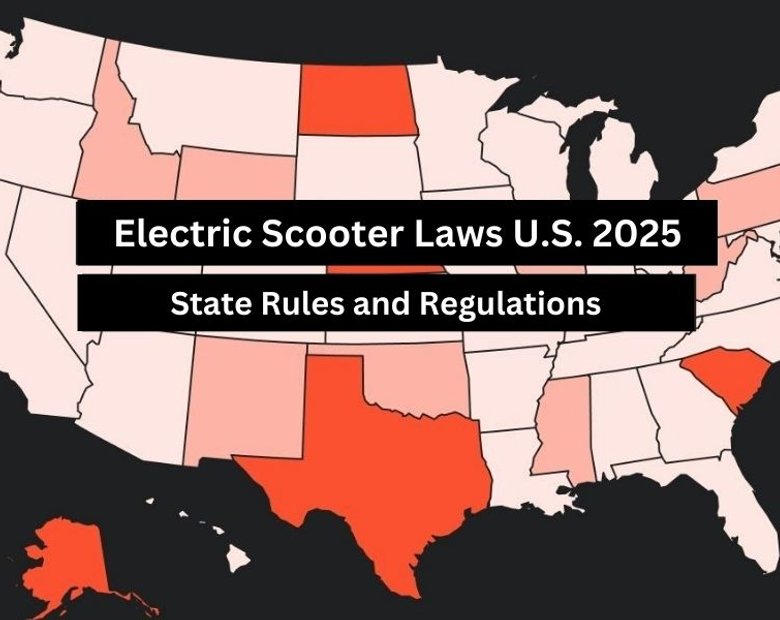
Stay current with the latest U.S. electric scooter laws in our 2025 guide. Updated annually since our first comprehensive guide, ensuring you have the most recent state and city regulations to ride responsibly”
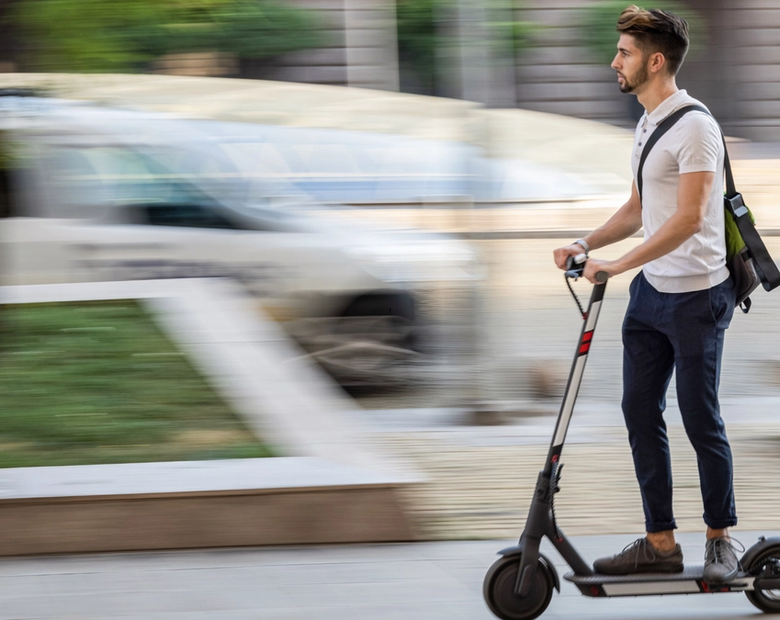
The Slack Core 920R is currently the fastest electric scooter in 2025 that you can purchase without the need for pre-order.
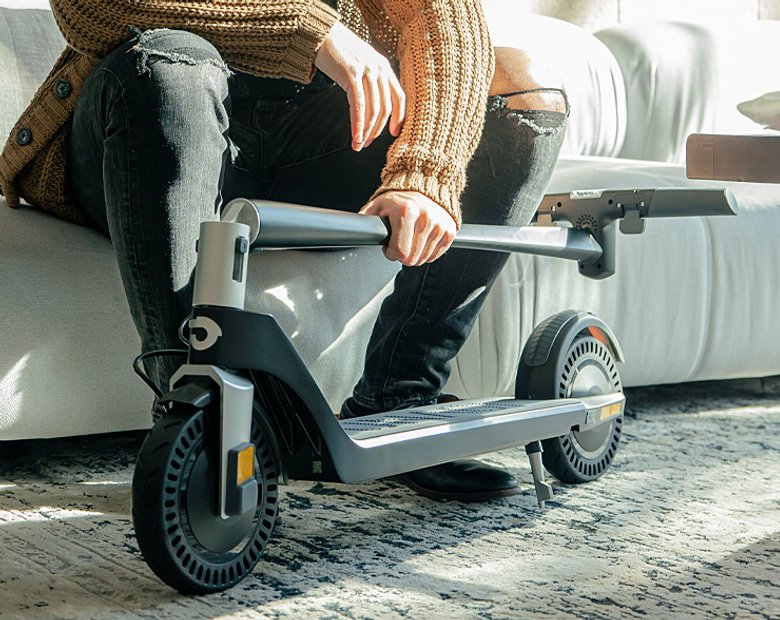
Our selection of the best electric scooters 2025 spans the fastest e-scooters to the most portable ones, the ones designed for city riding and off-road, the best scooters for rain, budget electric scooters for students, and more powerful ones for skilled riders.

The Unagi Voyager is the best lightweight electric scooter for adults and teenagers. It is the ultraportable sequel to its predecessor, the Unagi Model One Classic.

If you're wondering whether an electric scooter with a seat is right for you, this is a detailed article that would suit your need.

Understand which personal electric vehicle is best, the choice between an electric bike or electric scooter might already be made for you by some critical factors, including portability and storage capacity.
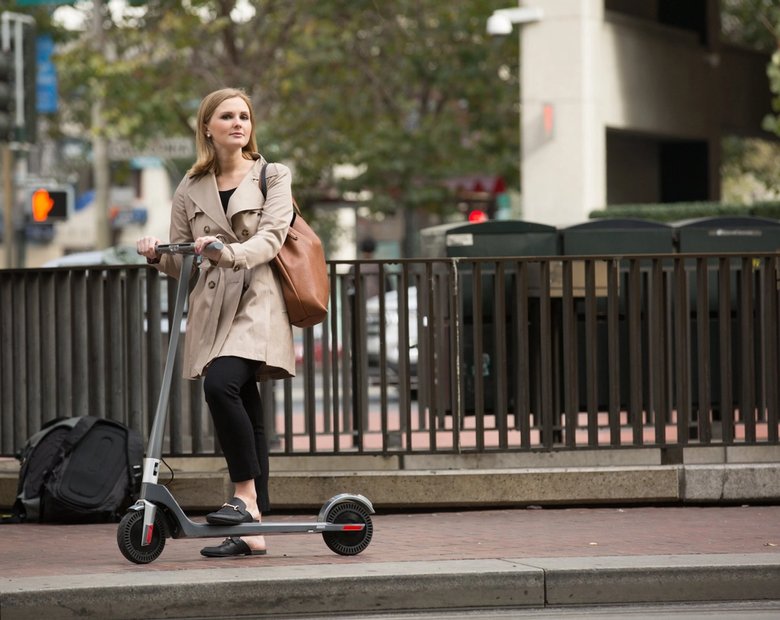
In the U.S., most states don't require a license. For those that do, they usually just ask for a regular driver's license or a learner's permit.

Yes, you can bring an electric scooter on a plane, but it needs to have a lithium battery smaller than 100 watt-hours, which most don't.

Manufacturers advise against riding electric scooters in the rain. The main reasons are: water can fry the electronics, make the ride dangerous, and void your warranty.

The basis and the premise of my work is that we either operate out of love or we operate out of fear...Time is currency. The coolest thing about the scooters is that it's really quick, and it goes uphill. From there, traveling more efficiently and having a good time doing it--I think that's the most important thing.

Cynthia Leu has a full plate. A tech worker by day, Cynthia spends her off time balancing the parallel lives of a powerlifter, entrepreneur, mental health advocate, and more. Riding Unagi helps this USMC veteran cut down on everyday…

https://www.youtube.com/watch?v=7m2hVBE62LY Rasheed Muhammad is sick of Los Angeles traffic. In order to preserve his sanity, Rasheed has traded his everyday driving habit for the portable and beautiful Unagi Model One. It’s an essential accessory for navigating LA streets -- and…

Rich Lee, Co-Founder of San Francisco’s SPRO Coffee Lab, wants to share his love for coffee with the world. He depends on riding Unagi to avoid the hassle of navigating the parking crunch in the booming Mission Bay neighborhood.…


